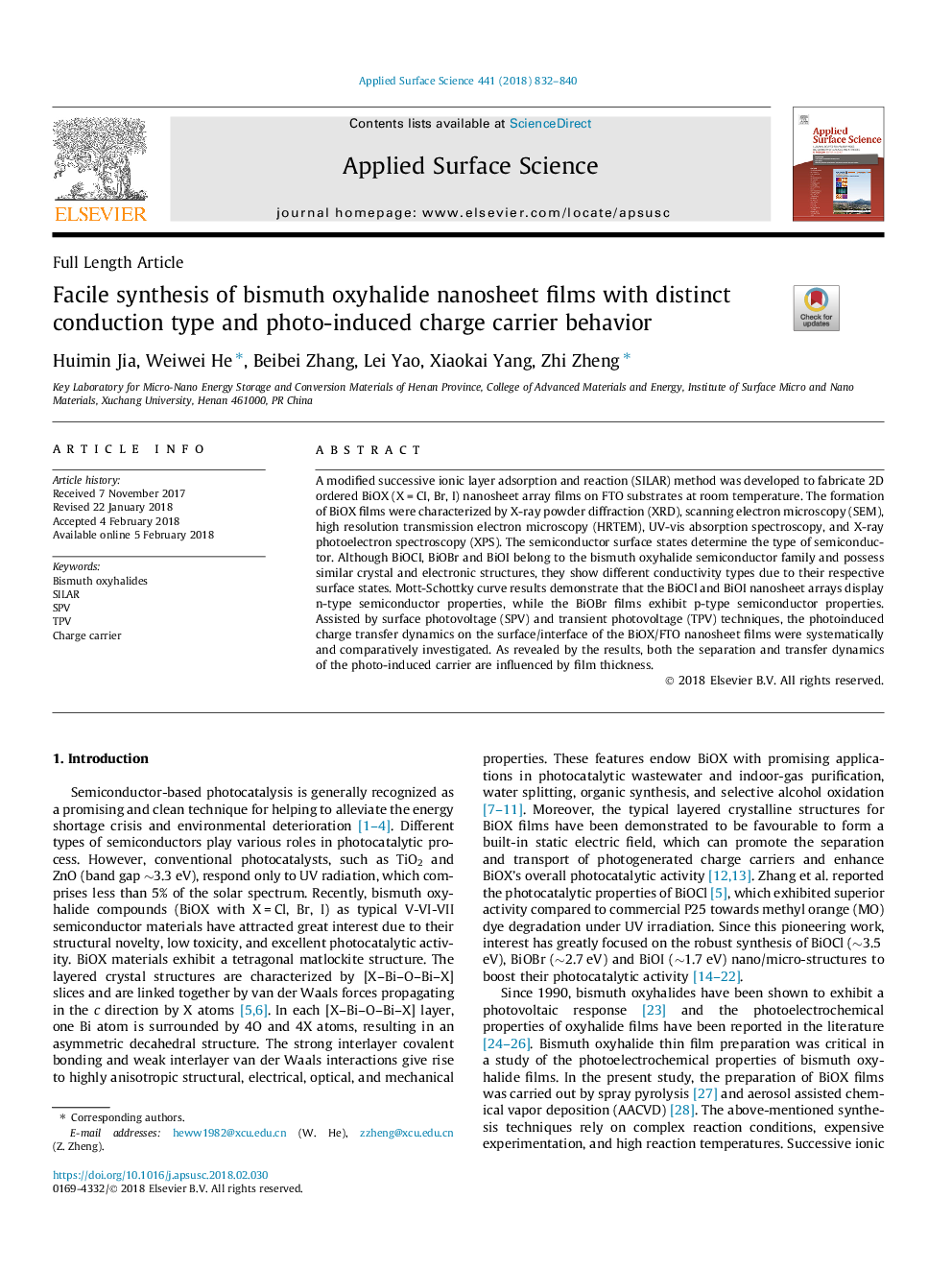| Article ID | Journal | Published Year | Pages | File Type |
|---|---|---|---|---|
| 7835123 | Applied Surface Science | 2018 | 9 Pages |
Abstract
A modified successive ionic layer adsorption and reaction (SILAR) method was developed to fabricate 2D ordered BiOX (Xâ¯=â¯CI, Br, I) nanosheet array films on FTO substrates at room temperature. The formation of BiOX films were characterized by X-ray powder diffraction (XRD), scanning electron microscopy (SEM), high resolution transmission electron microscopy (HRTEM), UV-vis absorption spectroscopy, and X-ray photoelectron spectroscopy (XPS). The semiconductor surface states determine the type of semiconductor. Although BiOCI, BiOBr and BiOI belong to the bismuth oxyhalide semiconductor family and possess similar crystal and electronic structures, they show different conductivity types due to their respective surface states. Mott-Schottky curve results demonstrate that the BiOCl and BiOI nanosheet arrays display n-type semiconductor properties, while the BiOBr films exhibit p-type semiconductor properties. Assisted by surface photovoltage (SPV) and transient photovoltage (TPV) techniques, the photoinduced charge transfer dynamics on the surface/interface of the BiOX/FTO nanosheet films were systematically and comparatively investigated. As revealed by the results, both the separation and transfer dynamics of the photo-induced carrier are influenced by film thickness.
Related Topics
Physical Sciences and Engineering
Chemistry
Physical and Theoretical Chemistry
Authors
Huimin Jia, Weiwei He, Beibei Zhang, Lei Yao, Xiaokai Yang, Zhi Zheng,
